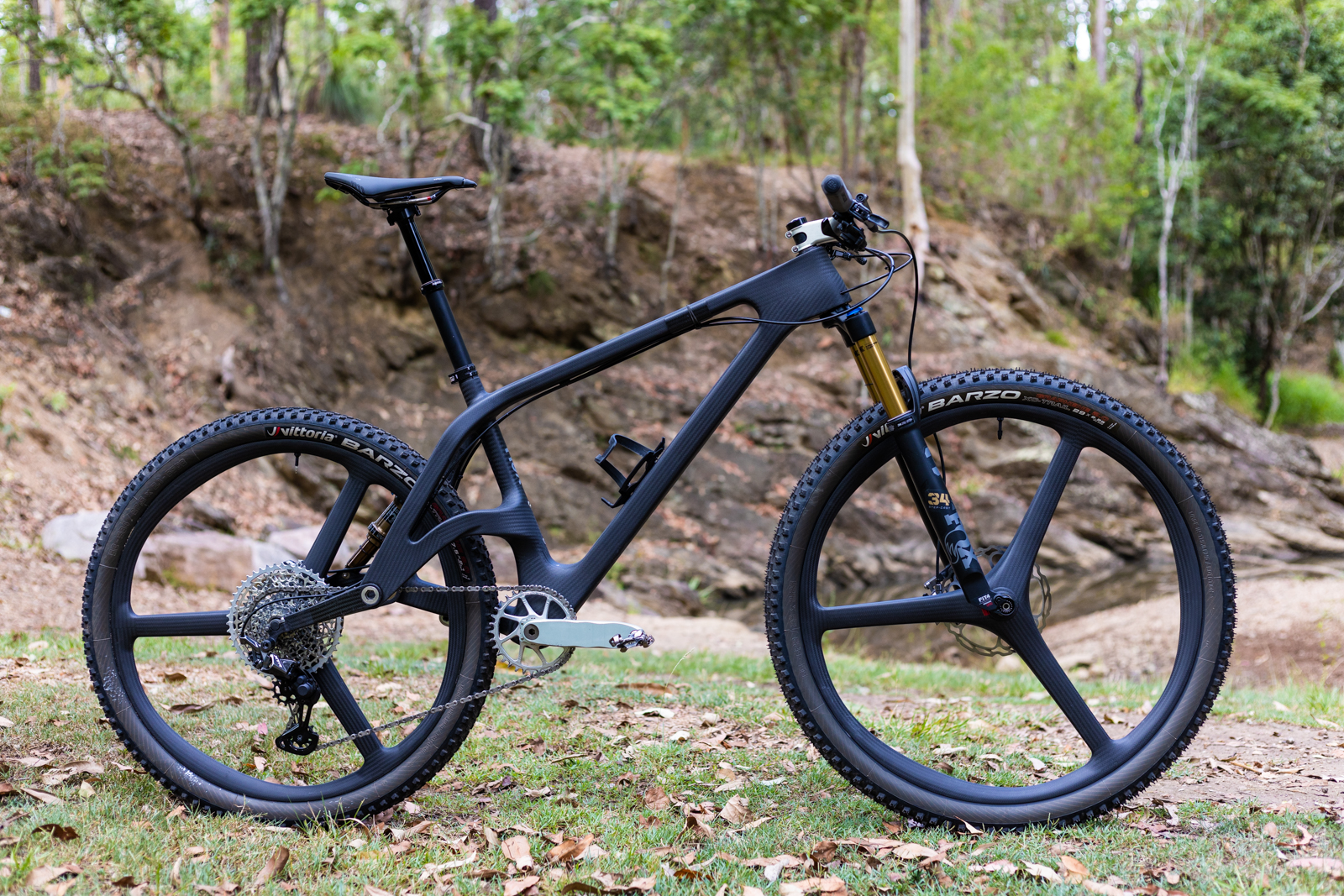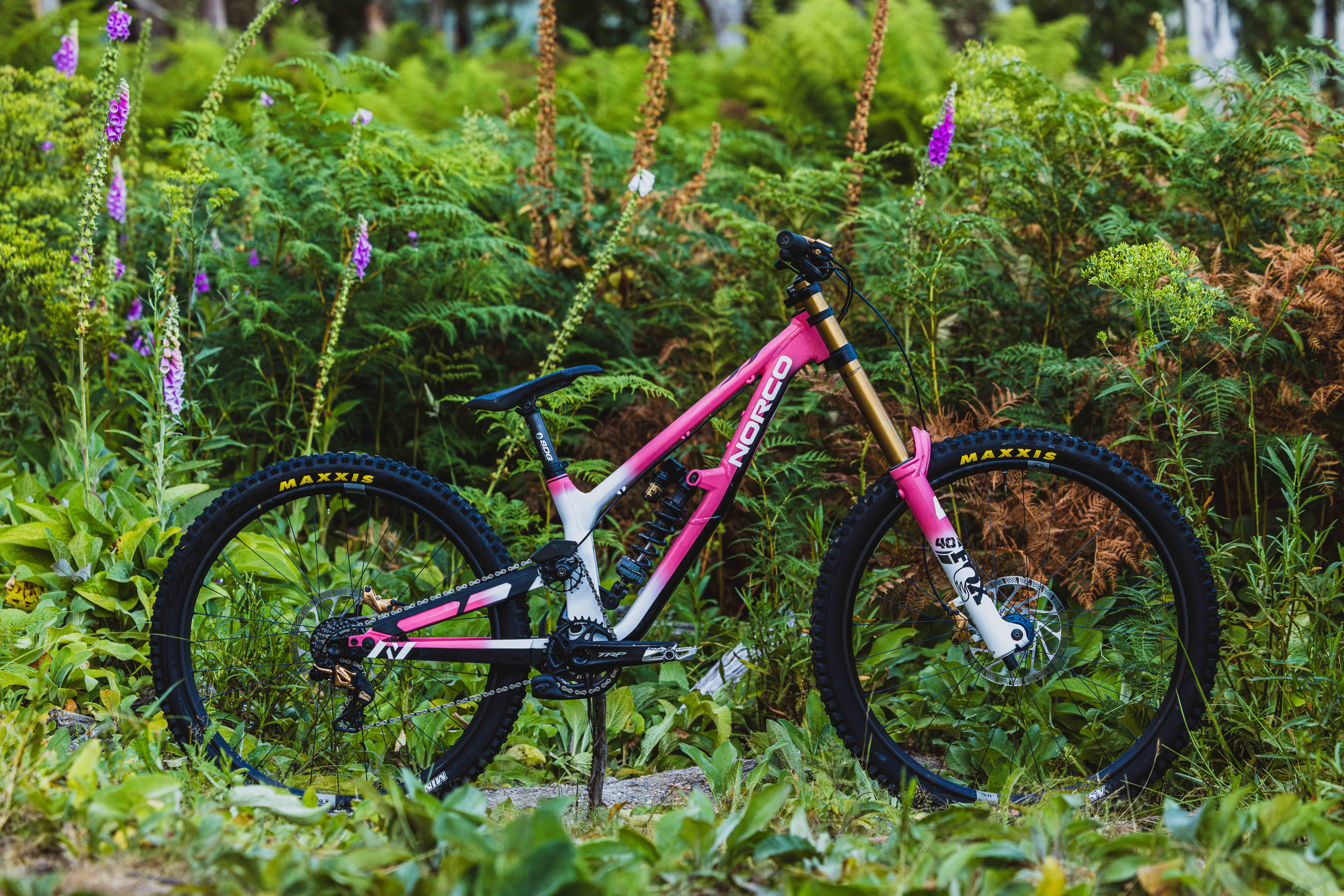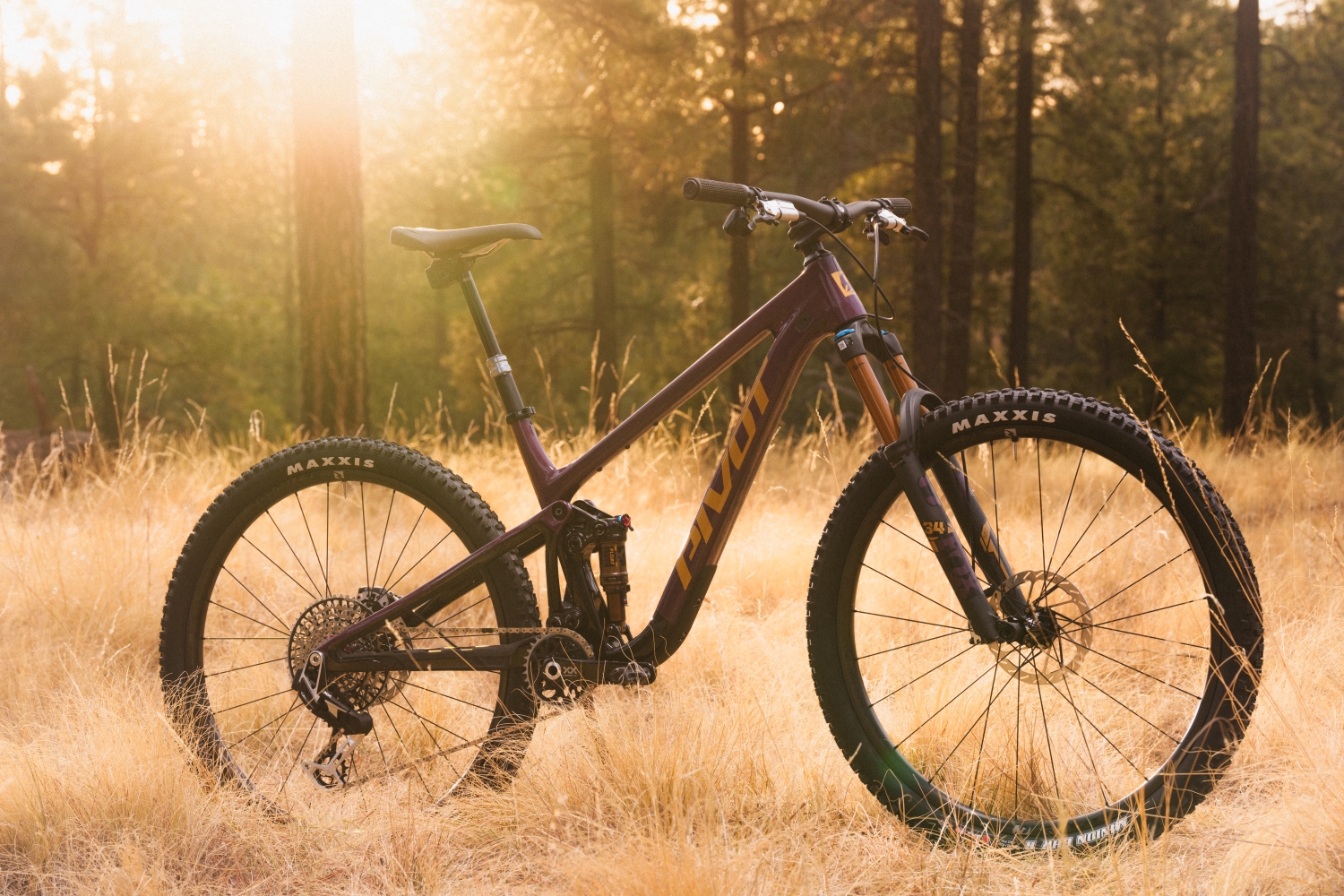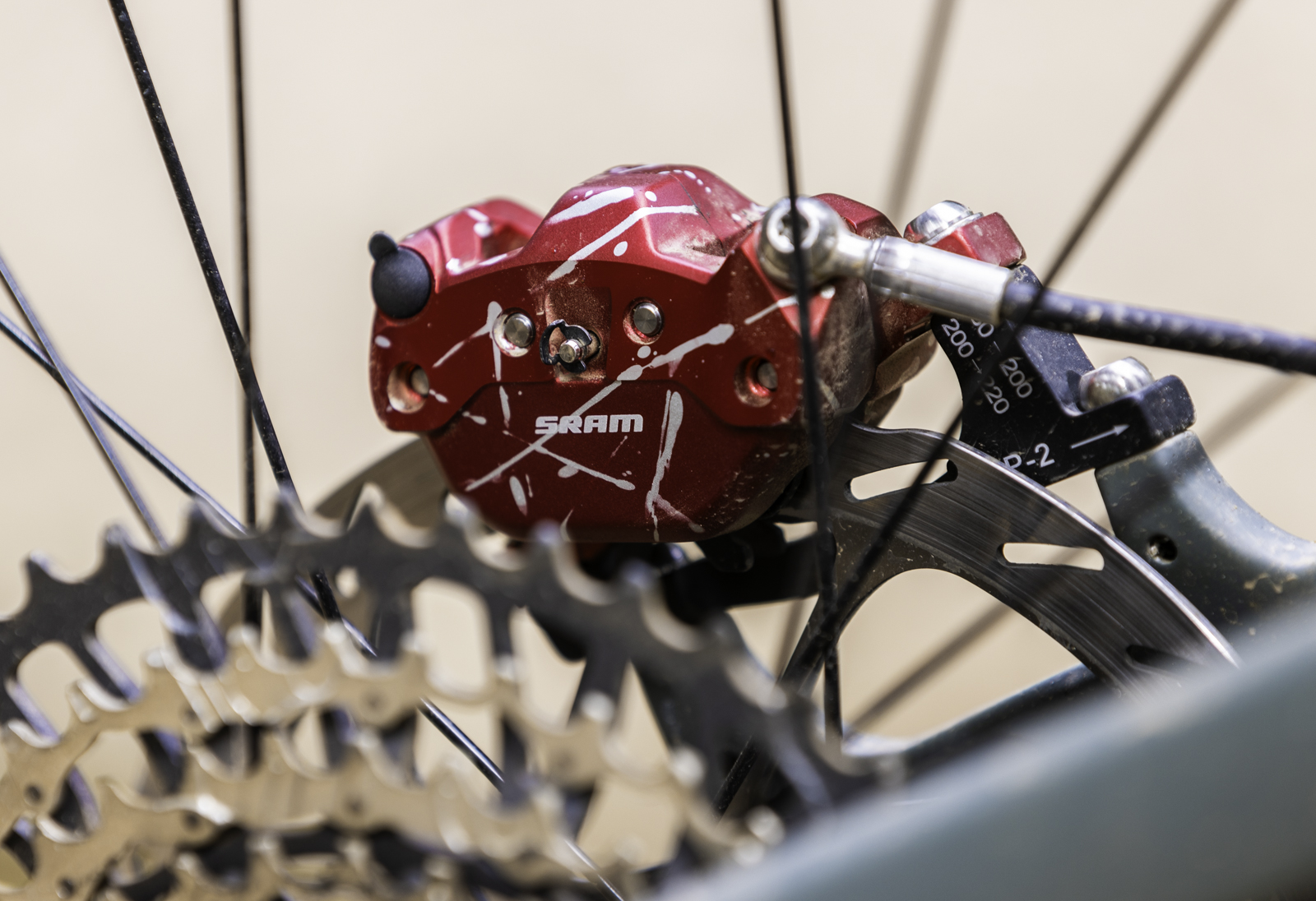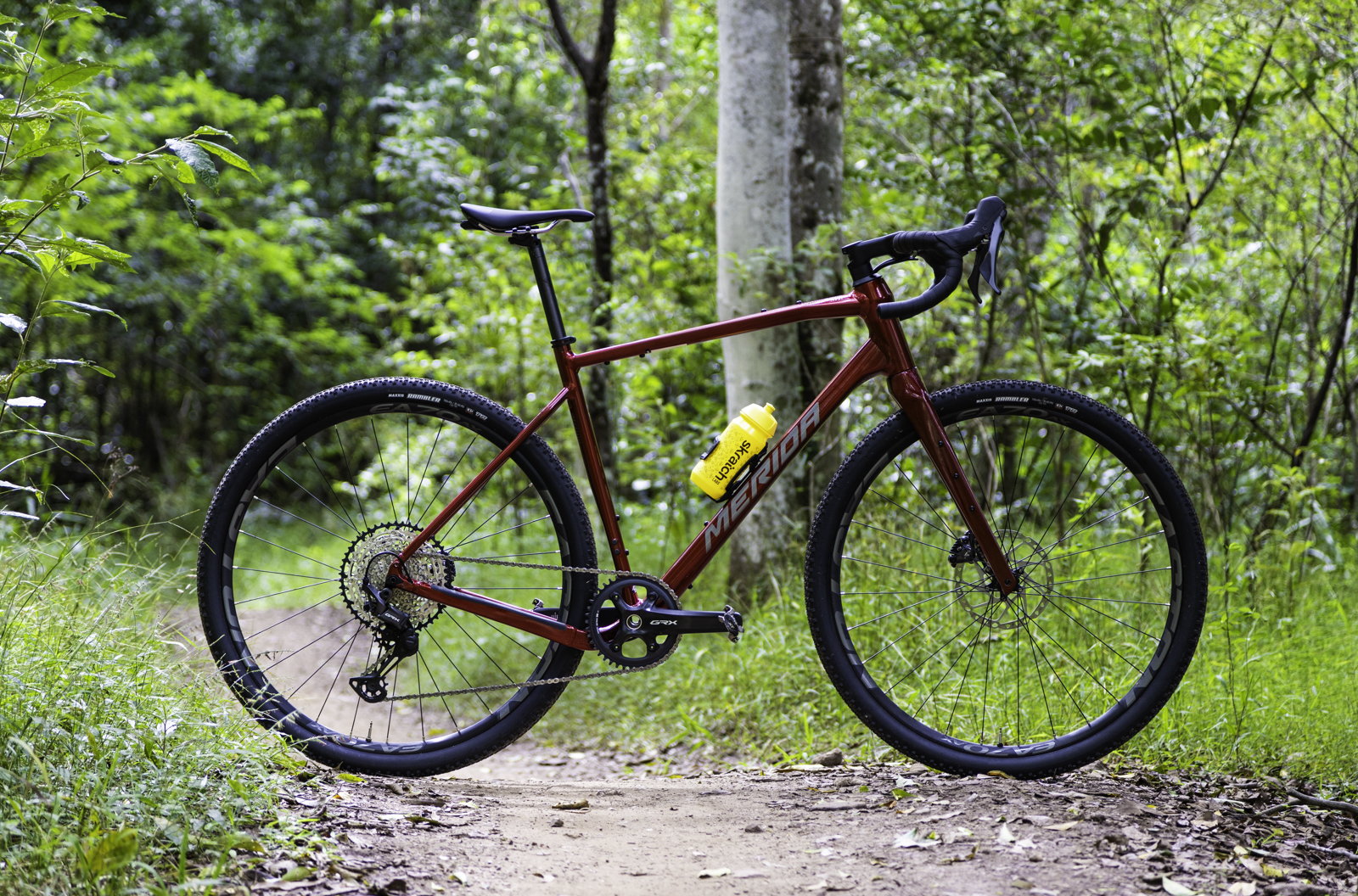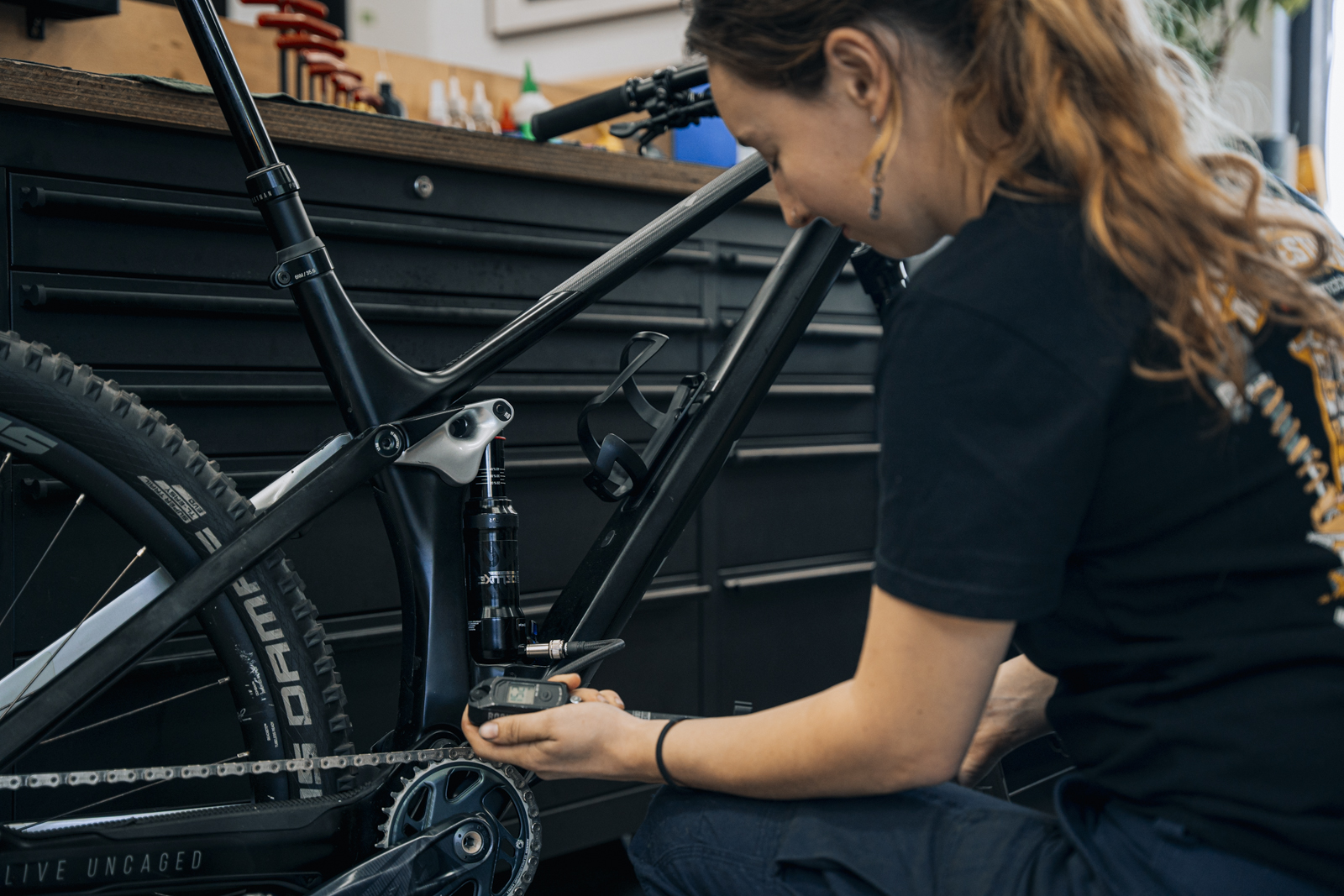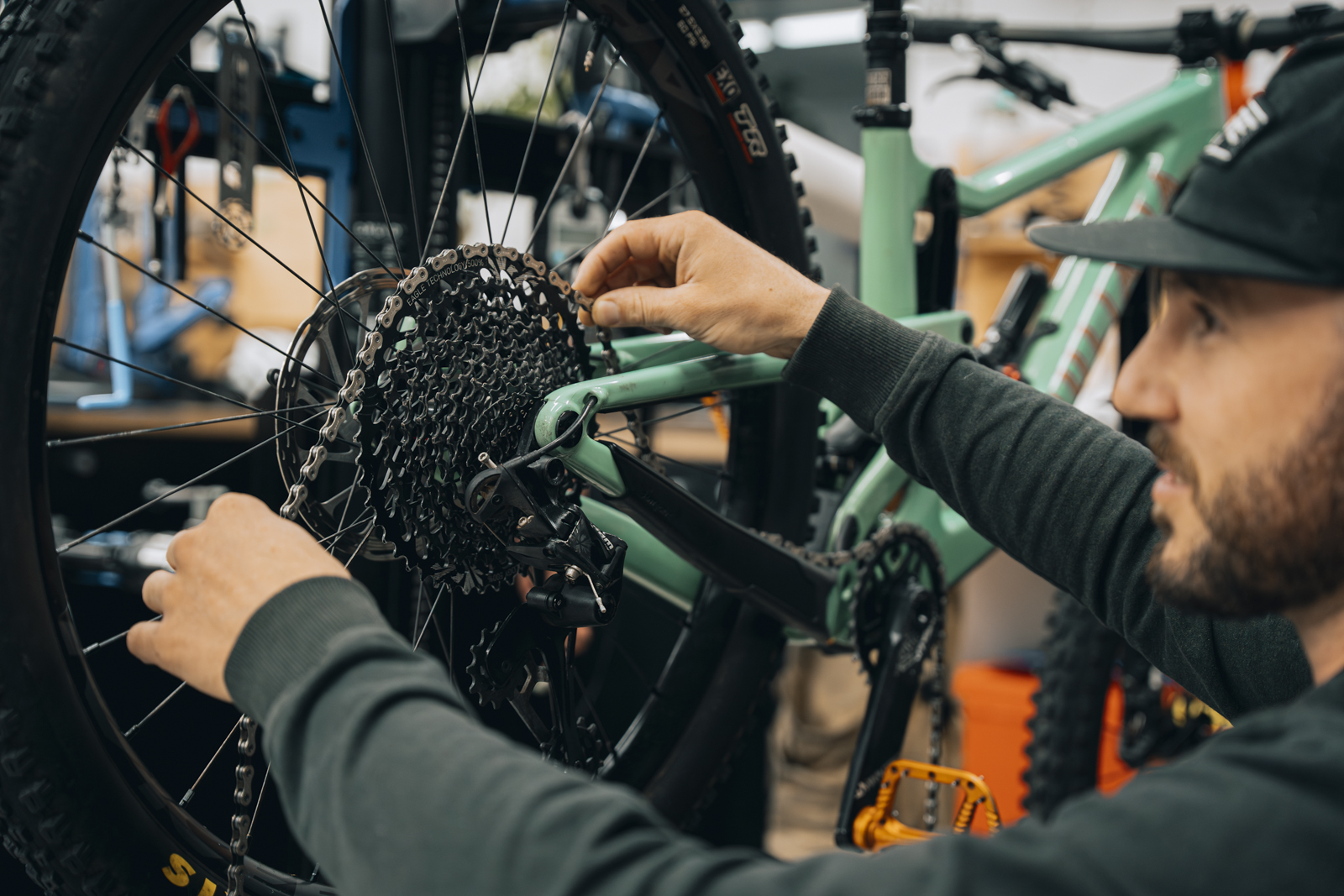TESTED: Vasstech Veli
The Vasstech Veli takes a few design concepts and puts them into practice. But how does it ride?
Photographer: Gerard Lagana | Words: Mike Blewitt
The rate of change in mountain biking is relatively slow. While a bike you buy today will have a lot of differences to a bike from 5 years ago, there haven't been any huge shifts in design. We have certainly had a lot of refinement, but there really hasn't been anything that has been a major industry disruptor. Earlier in this issue Hayden rode the Trinity V4, a gravity bike that can swap from downhill to enduro, while also using a traditional drivetrain or gearbox. This is the sort of thing that represents change – as does the Vasstech Veli, a mixed-wheel, super light carbon bike I was sent very late in 2022 for testing.
Tester: Mike Blewitt
Riding Experience: Too long to know about much else
Generally Rides: Norco Revolver FS 120
Height: 178cm
Weight: 72kg
Bike Test Track: Iron Bark, Gap Creek trails
This bike is one of a handful in existence at the time of testing. It comes in one size with a 452mm reach, 68 degree head angle, tiny 414mm chain stay length and a low 99mm head tube. The 120mm travel fork pairs with 112mm of rear travel on the 27.5” rear wheel. There's a lot to take in, from the carbon monocoque wheels, boutique cranks, stem, bars and of course a tiny swing arm that pivots from the centre of the chain stay, and is predominantly supported on the non-drive side.
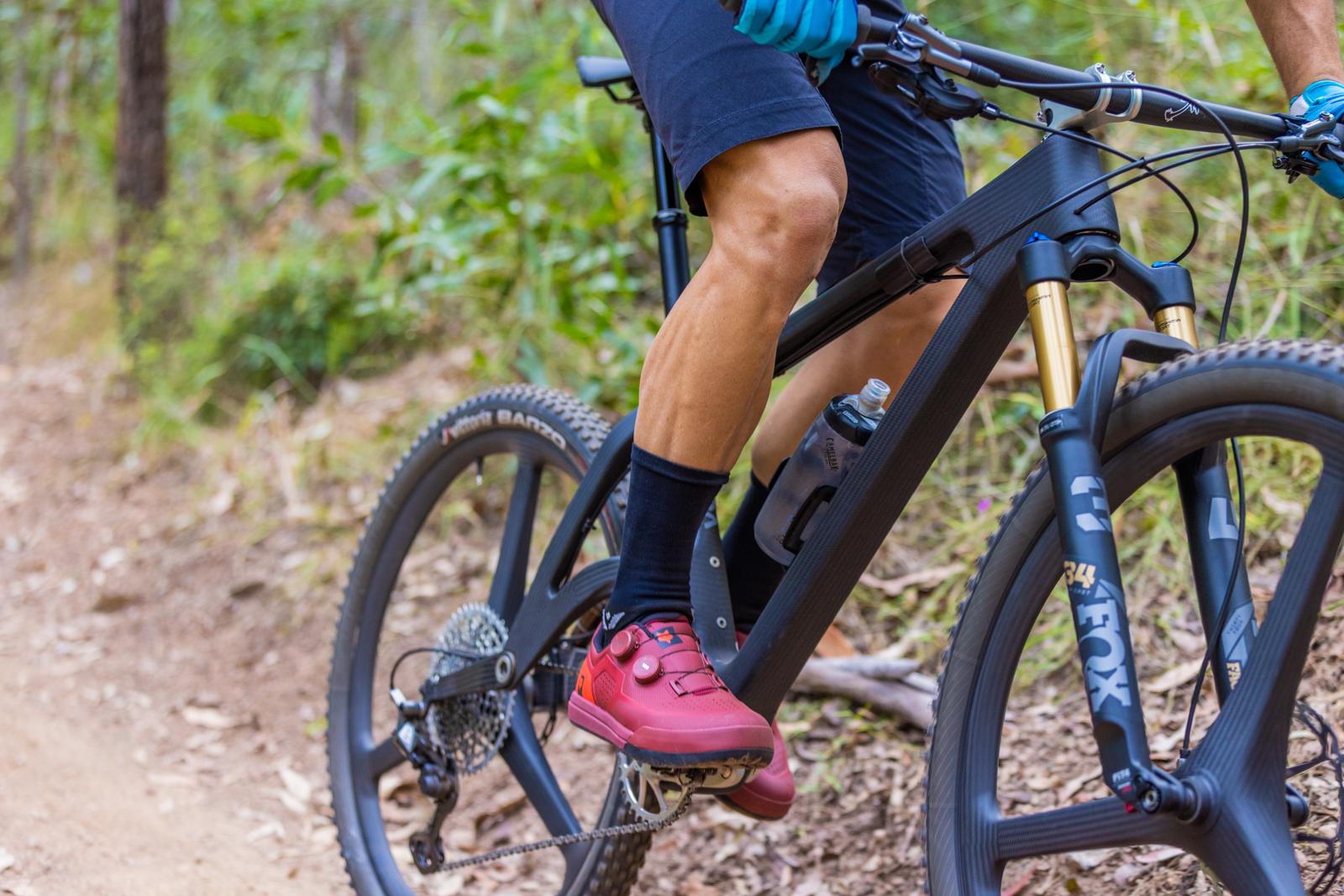
The Vasstech Veli is in limited production, and the bike I was sent has a Shimano XTR M9100 12-speed group set with Fox Factory suspension, and it retails at $13700. I had a lot of questions before evening putting a leg over the bike, so I reached out to the designer Tim Southall.
The backstory of the Veli
'I'd say the initial concept starte dabout 10-12 years ago,' said Tim Southall, the Veli's designer, when I gave him a call to find out more about the bike, the suspension platform and unique componentry. 'I was studying internal combustion engine design at the time. I had a concept for a more efficient engine, but I needed millions of dollars just to prototype it. So I looked at how I could implement it for motorbikes, but I ended up getting intrigued by suspension and that lead me to mountain bikes.
Tim wasn't a stranger to mountain bikes, having raced bikes until he was about 14, when his family moved to Samoa – better know for surfing than cycling.
'I lost touch with the scene, but as an engineer I was intrigued by rear suspension systems. I can sit and stare at something, find weaknesses, and think of ways to do it better.' And that's what Tim did with the rear suspension of a mountain bike. He realised he could do it better, and make it simpler.
The Vasstech Veli rear suspension design runs on a pivot in the middle of the chain stay. The non-driveside of the bike takes most of the load, with the rear shock sitting where a seat stay would. Tim explains that it is simpler than it looks.
'If you took a DW-Link lower linkage, and shifter it all the way to the back of the bike – you have our bike.' Tim was chasing a simpler and lighter outcome than what was available, and all the development he has done works towards greater simplicity and less unspring mass.
'My key aims with the design were better pedalling efficiency, low unspring mass and a good rear axle path.'
Tim mostly avoided talking about anti-squat as he feels it's not that relevant to mountain bike systems, where the rider's position on the bike changes a lot and has a significant impact on the suspension. And the acceleration force compared to something like a motor bike is very low, and a highly inconsistent pulsing drive due to a rider's pedal stroke. What Tim has designed sees a result where the bike sits into its asage at different amounts, depending on the gearing.
'In the smaller cogs, its very stable and sitting at about 25% sag. But in the bigger cogs when climbing it sits higher at 15% sag.' The benefits of this are a bike that keeps you higer in the travel and more over the bottom bracket when pedalling on a climb, but when pushing hard on the flat or on a descent, you're further into the sag and more stable.
The Fox Float DPS has a lock out, but I was surprised that it wasn't a remote lock out.
'Lock out has no huge value if the kinematics are dialled,' Tim told me. The Fox shock actually has barely any compression damping, given the systems design. I was also surprise to see a mixed wheel size, or mullet set up, with a 29” front wheel and 27.5” rear. With 120mm fork travel and 112mm rear and a sub-10kg bike weight – I would have expected a 29” wheeled bike. However, Tim reckons the 27.5” rear wheel is part of what makes the bike what it is.
'While a big wheel has a better angle of impact, the smaller wheel gets a better axle path to get over the bump.' Tim goes on to explain that while the point of impact on a smaller wheel is poor, the kinematics are excellent. But a smaller rear wheel relies on the strength of the suspension system and how responsive it is. A larger wheel and larger tyre has huge benefits for small bump compliance from the tyre system, but the narrow 27.5” wheel of the Veli lacks that.
'The smaller wheel is stronger and has less mass,' Tim explains. He also explains how a faster rotating small wheel has less pedal kick back, especially if the hub engagement isn't too rapid. That low mass is a huge benefit in how supple the suspension is. Tom states that if you had a 200mm travel bike and hit a 180mm object, if you had zero unsprung weight, the only feedback would be seal friction. Nothing has zero unsprung weight, but his goal is to reduce it. If you can drop your unsprung weight by 10%, then the feedback is dropped 10%.
While the Veli is a 9.8kg 120/112mm travel bike, the system can be applied to longer travel frames – but they would need longer shocks to stick around the optimal 2.1:1 ratio currently being used.
There's lots of other unique parts on the bike, like the cranks. These are alloy, light and stiff. They're made specifically to clear the oversized left chain stay, to save compromising the frame design to suit all available crank sets. Tim has suggested this may change in the future, to allow owners to run power meter equipped crank sets.
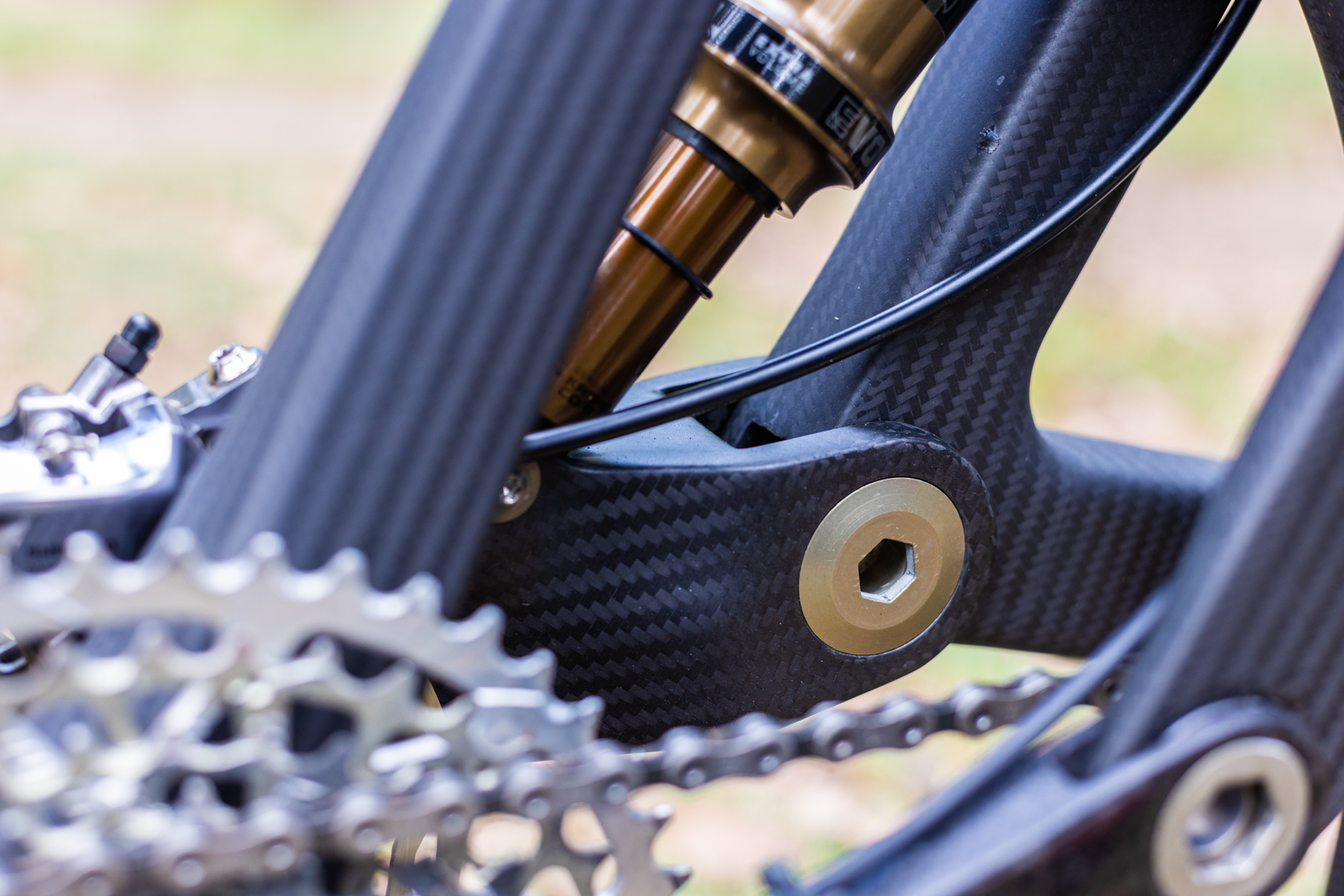
It's hard to ignore the monocoque carbon wheels, but again, Tim has his reasons. He points out that cycling is the only industry stuck on wire spoked wheels, with dirt bikes being one other part of an industry. While the UCI rejected wheels like the ones seen here in the 1990s, they do have a potential for repair and lower maintenance. Time will tell if Tim's hunch plays out.
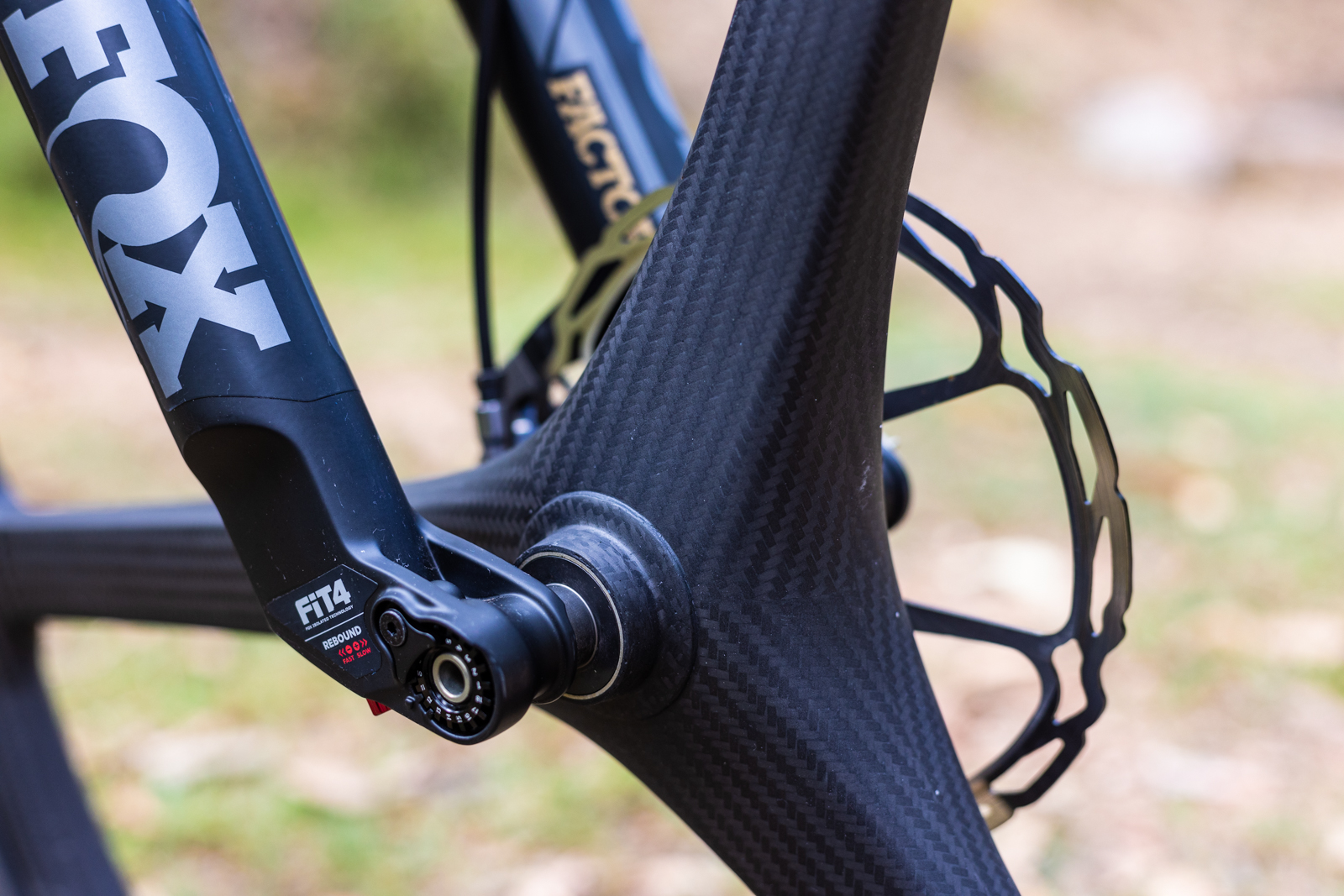
I was left to set the sag at about 25%, fit a single bottle cage (although the Veli can take two) and my pedals. My seat height of 760mm is right at the top of the height possible with the Fox Transfer SL dropper, but the reach was spot on. While my test bike had a 760mm wide set of bars, 720mm and 780mm are also available at the time of ordering.
On The Trail
There's no escaping the feel of jumping onto a sub 10kg bike – they just react so quickly to pedal input! On my first ride I opted to ride to the trails using back roads and multi-use trails, to get used to the bike and any inherent handling quirks. Surprisingly, there weren't many.
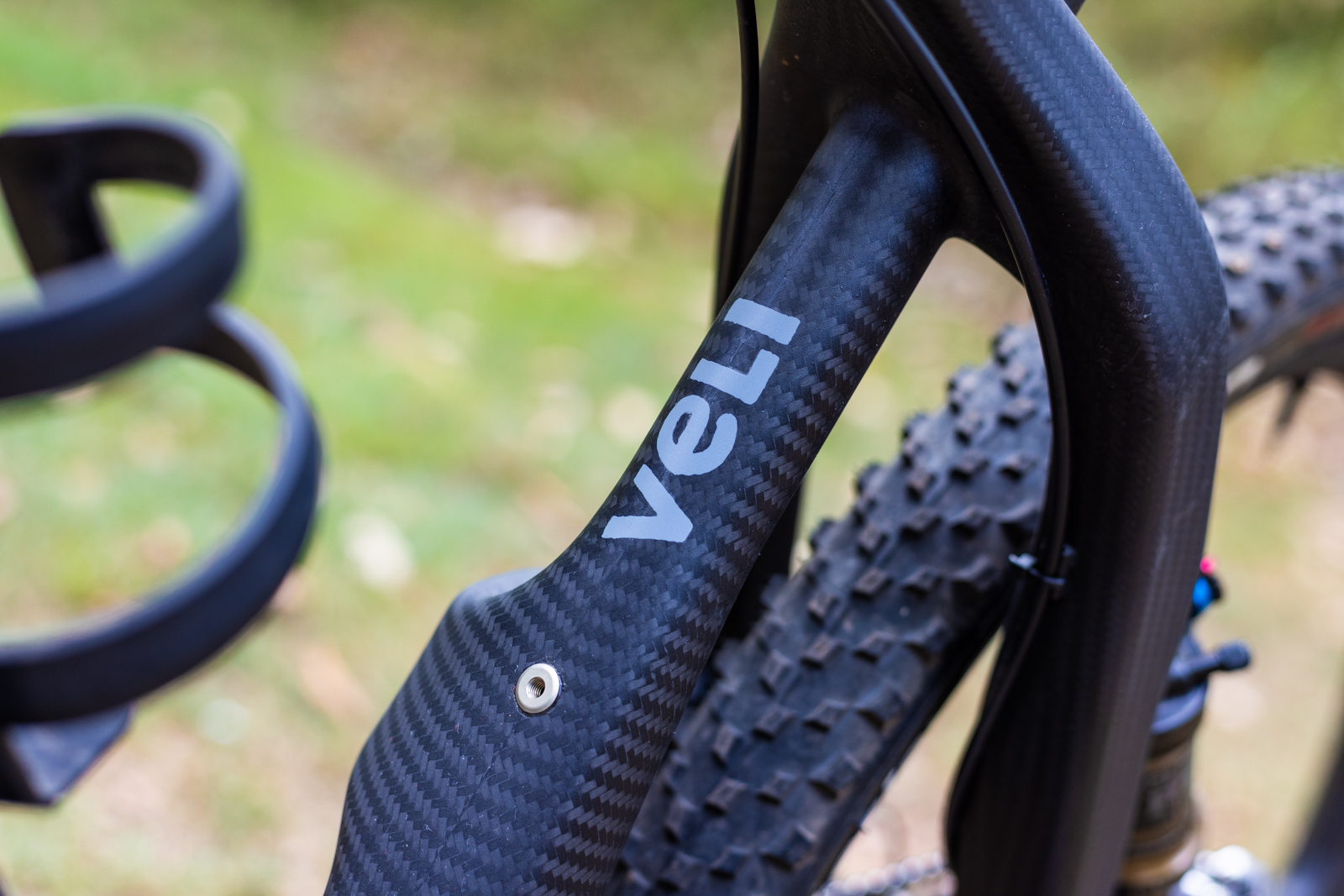
Under pedalling, I found the suspension system to be very stable, although I kept it in the 'trail' position of the Fox DPS rear shock, which leaves it operating a little firmer. On roads and on flatter fire trail climbs, it did take a while to adjust to the feel of the smaller rear wheel. Often a mixed wheel setup errs to a slightly larger tyre width on the back, but on the Veli it is narrower. In part to suit Tim's unsprung weight goal – but likely for clearance as well. Given how oversized the left side of the frame is, there is limited real estate for anything much wider than the 2.1” Vittoria.
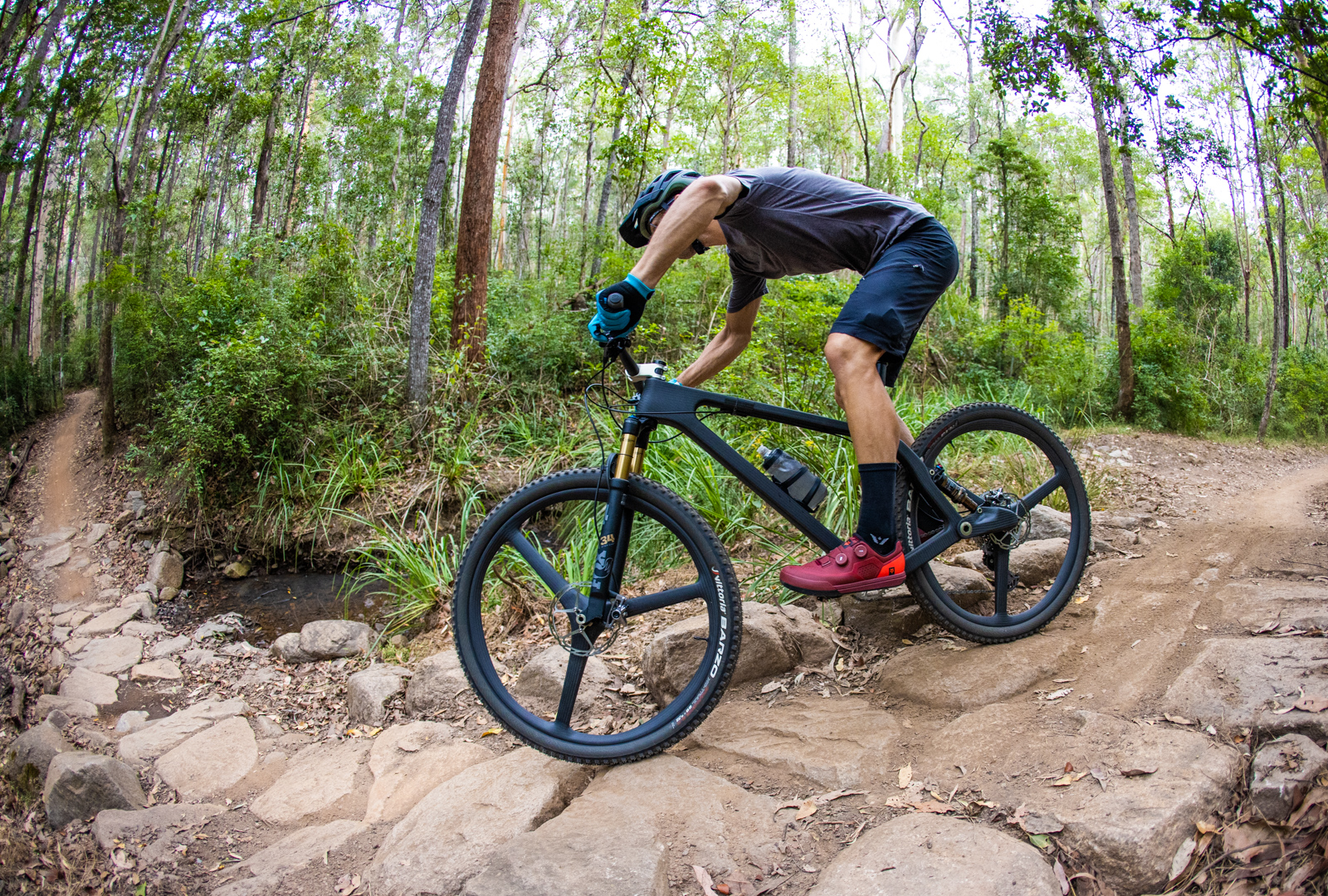
You could then be forgiven for thinking that with a pizza cutter like that on the back, it would result in a harsh ride, especially with a stiff monocoque carbon wheel. But even in a firmer shock setting, I found the bike handled the trail chatter on multi-use trails without an issue.
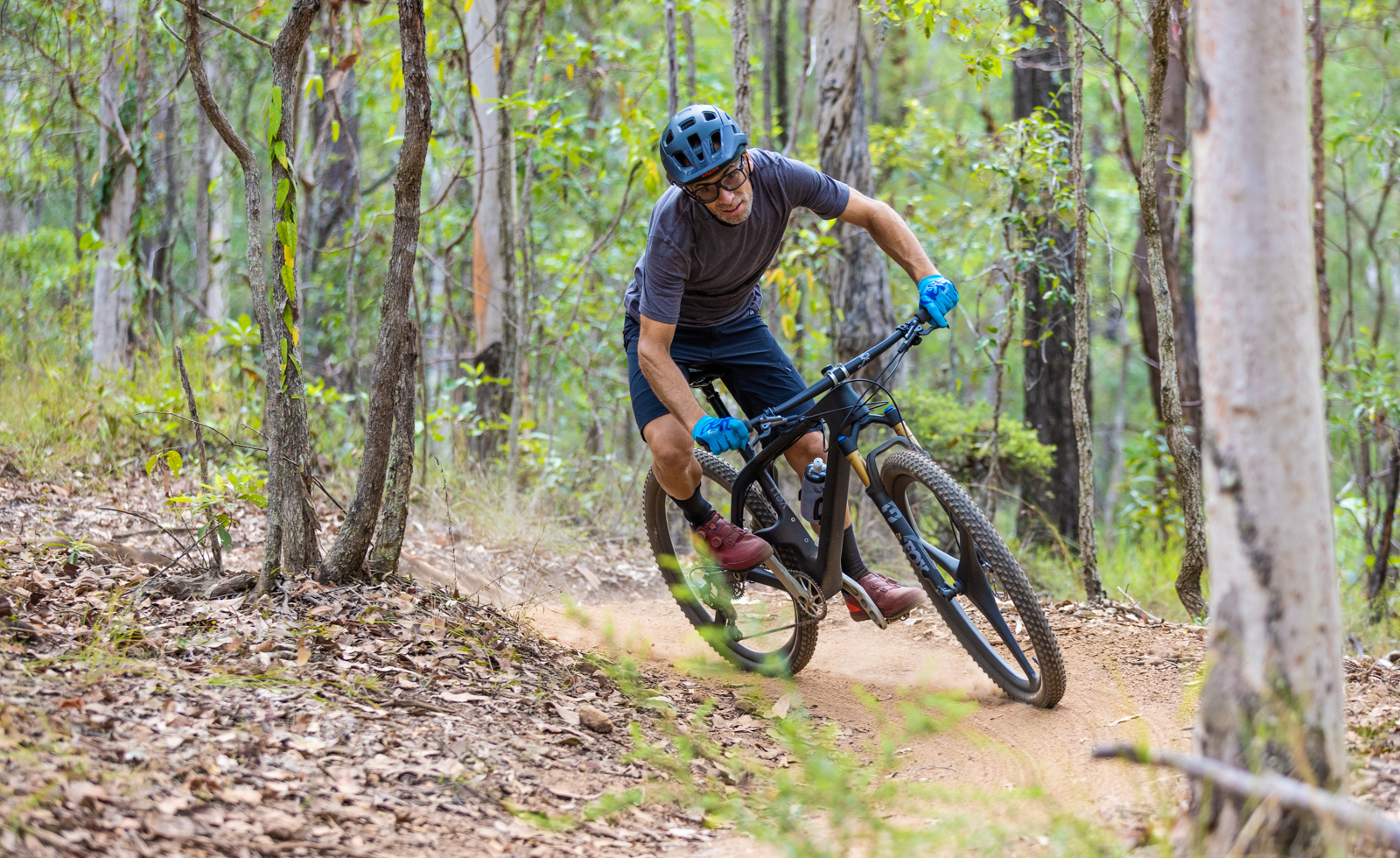
Once at my local trails, I made sure the suspension was completely open and tackled some of my regular loops. With the very short back end and low weight, the bike accelerated really well. The suspension did stiffen up a little when climbing up steeper trails, but it was still providing plenty of traction – which is what dual suspension is all about.
On descents, I was impressed by the handling. For a light bike it remains very direct, and the suspension still offers plenty of support, despite the supple feel. I never experienced a harsh bottom out, although I wasn't sending anything huge – it's a 10kg XC bike afterall.
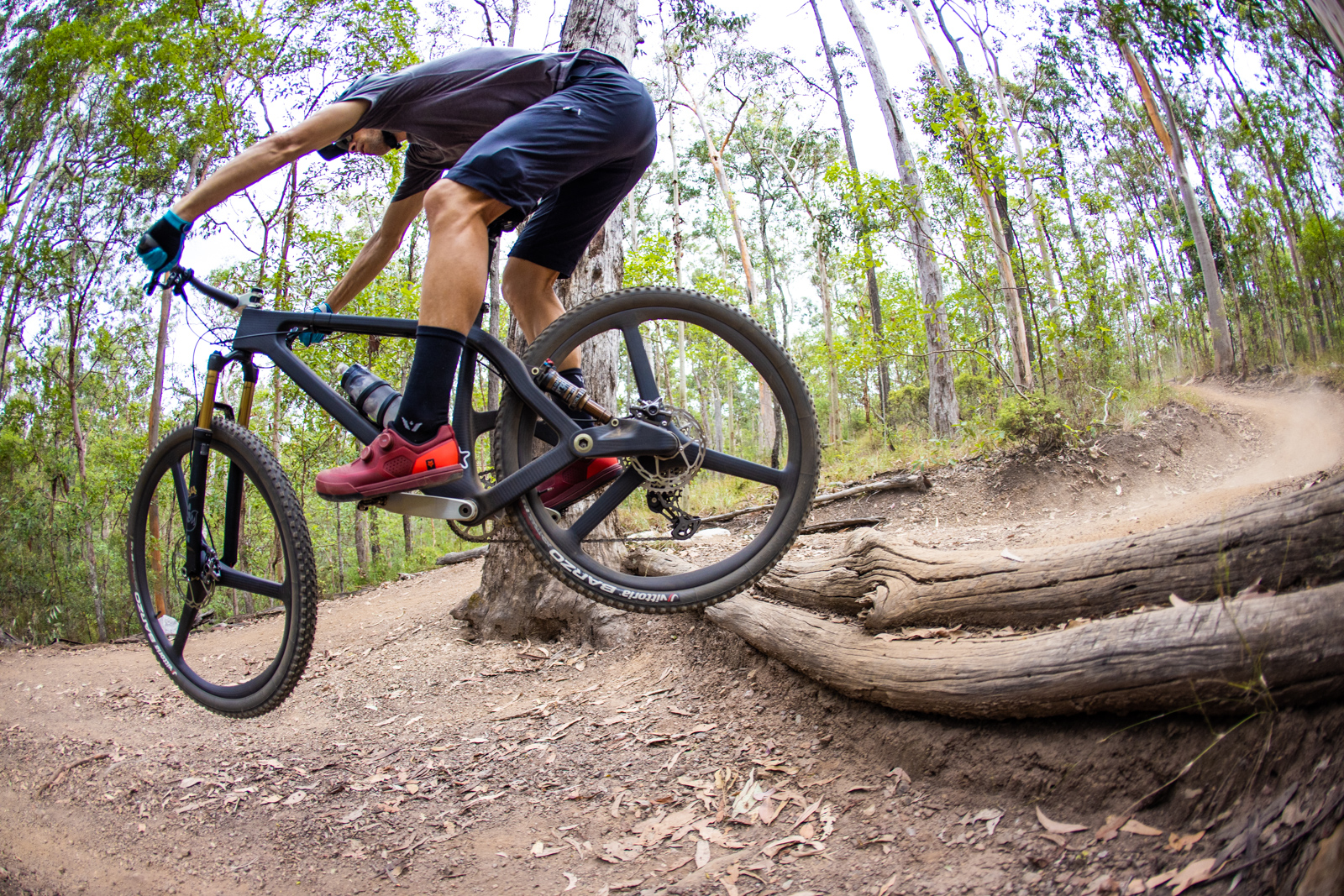
Where the limitations were felt was in the drier, looser conditions. Which my home state of Queensland has had in spades recently. These conditions don't favour much grip for anyone, but I did find it was harder to keep the rear tyre gripping than on my own 120mm travel XC bike, with a 2.4” set of rubber. I suspect the contact patch on the smaller wheel and tyre made the difference here.
Of course, there are trade offs. The rear wheel is a custom unit that sits on a huge left axle that tapers down to fit the SRAM XD driver. The Garbaruk 10-48 cassette is nice and light, but I'd prefer a Shimano XTR M9100 cassette to make the most of the HyperGlide Plus shifting. However, in the earlier design phase the Microspline freehub wasn't something just anyone could use, and its internal dimensions add constraints to bearing and axle size. Times have changed, and the riders who have ordered Vasstech Velis will have Microspline drivers shipping with their bikes, so they can use Shimano cassettes if they prefer. That would be my choice, as I found the Garbaruk cassette never shifted as consistently as it should. Of course, Tim is also talking about looking at making his own cassettes…
The rear wheel isn't fast to remove either, with a slightly complicated system. Tim Southall isn't concerned though, and expects an update to be ready within 12 months.
Our Take
This has been one of the most interesting bike reviews I have done. And in a way, I feel like I have been reviewing a proof of concept more than a production bike. My sense is that the Vasstech Veli is here to be an industry disruptor for suspension design. It was very supple, very supportive, and doesn't require complex shock tunes, while also running at a pretty low pressure (I ran 135psi) to reduce the load on the seals. Based on discussion with the designer, I expect the design will continue to evolve – but he'd happily see the suspension concept developed by a third party under licence. 'A great bike that you could get for about $3000 – that's an artform. I would love to outsource that'. But for now, Tim is focused on high perfomance products, and looking at things and finding better solutions.
If you like bikes that buck the trend and forge their own path, and you're looking for a lightening fast XC and light trail bike, then I'd look these guys up. You can guarantee you'll have something special. This bike was pre-production, so it did lack a couple of nicer finishing points like bosses to keep outer secure – but overall the ride was very refined. I'll be interested to follow the progress of the Vasstech Veli.
SPECS
Brand: Vasstech
Model: Veli
RRP: $13700
Weight: 9.8kg (as tested)
From: vasstech.design/#home
Available Sizes: One size, 440mm seat tube
Frame Material: Carbon monocoque
Fork: Fox 34 SC Factory FIT4, 120mm
Shock: Fox Float DPS Factory
Shifter: Shimano XTR M9100 12sp
Derailleur: Shimano XTR M9100 GS 12sp
Crank: Atoll alloy, 169mm, 34t
Chain: Shimano XTR M9100 12sp
Cassette: Garbaruk 12sp 10-48, XD
Wheels: Carbon monocoque, 29”/27.5”
Tyres: Vittoria Barzo, 29×2.25”/27.5×2.1”
Brakes: Shimano XTR M9100, 180/160mm
Stem: Atoll 60mm
Handlebars: Atoll carbon, 760mm
Seatpost: Fox Transfer SL 100mm
Saddle: Prologo

